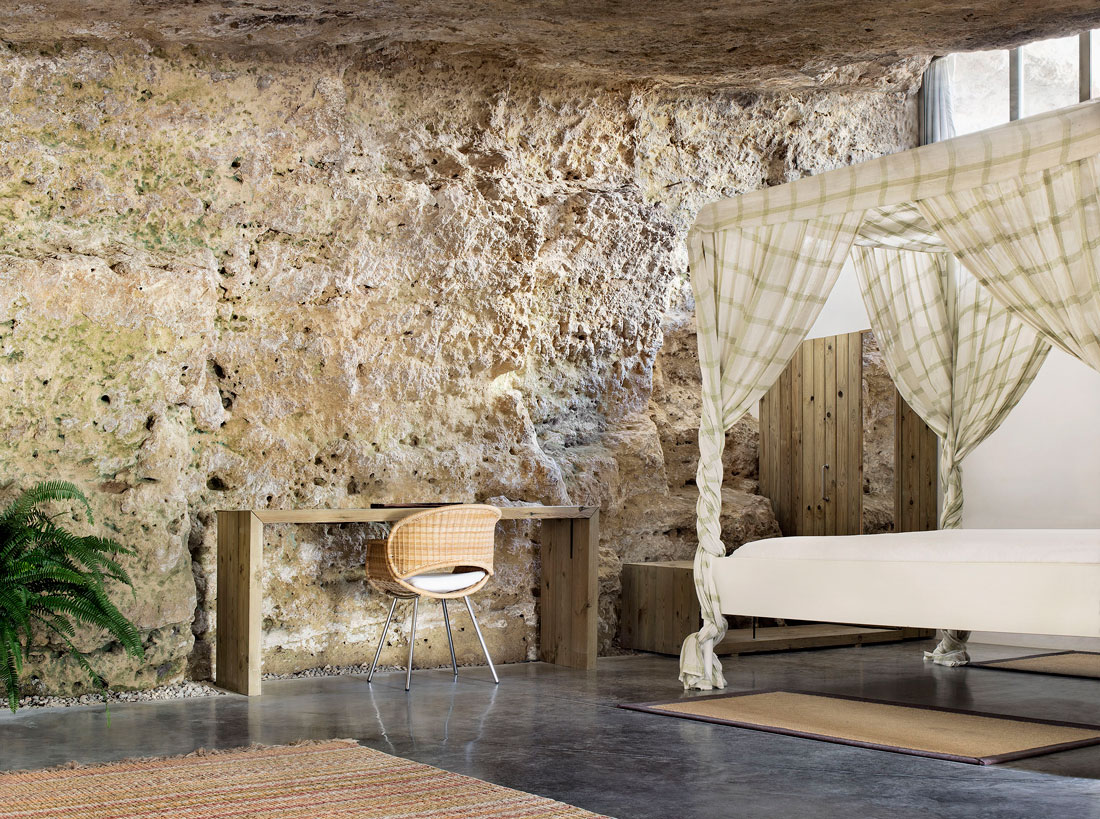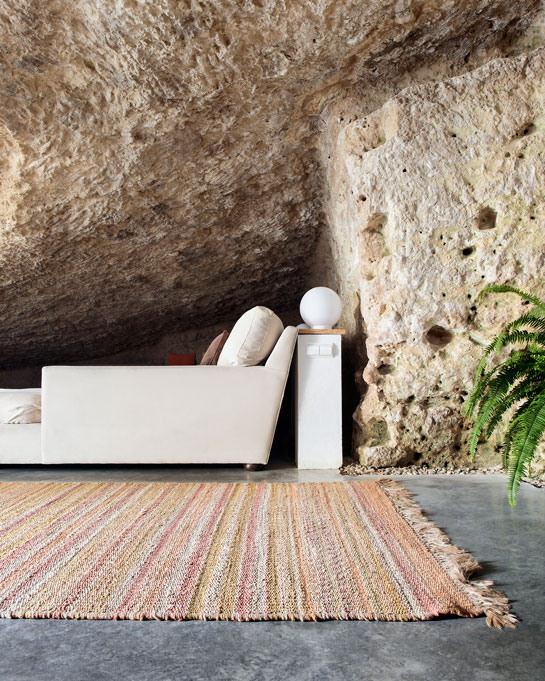journal
29 / 04 / 2017
The Cuevas del Pino estate sits in the foothills of Sierra Morena, in calcarenite stone terrain arranged in a slightly sloping strata that gives rise to various geological formations native to the area, among these are caves which resulted from quarrying that supplied Cordoba with stone during its most splendorous centuries.Historically, the product of these hollows in the rock emerged when livestock watchmen used them as small shelters. Today, they have been rehabilitated to form rural housing and accommodate new countryside activities.
Both the pre-existing walls and the rock itself, enclosed and defined an area of great spatial and material wealth, and for this reason, we decided to focus the intervention toward a fluid and continuous dialogue between those pre-existing conditions and the new architecture, always from a respectful position seeking proximity rather than direct contact.
Within this dialogue, we have created a new spatial experience that manages to value the tectonic nature of the area through the use of new architectural elements: clean and quiet volumes, bright and ample spaces, use of stone materials for the flooring, such as concrete and marble, glass openings to the south to conjure natural light and handcrafted wooden furniture to give warmth to the cave house.
The façade of the cave house is joined to a series of vernacular building structures rooted in the traditional use of the farm and can be found across a 3,000 m2 garden located within a 23-acre estate, dedicated to ecological agriculture bearing crops of beets and garlic and fruit trees of different autocthonous varieties. A path leads us to the terrace of the cave house and invites us to come stay inside the interior of the earth, from the bottom of a descending staircase to a level height from which we can enjoy and contemplate the surroundings and the richness of the circumambient nature. Acting as the preface to the cave itself, this introductory space acquires a particular importance as the juncture between the exterior and the interior, showing us a contrast between the strength of the stone and the lightness of simple and discrete architecture that adapts to the existing form of the hollow, allowing us to go deep inside and create a refuge.
Aside from fulfilling its logical function of capturing natural light to feed the interior space, the use of glass in the façade also allows us to create a set of transparencies that likewise sheds light upon the characteristics of a space in which we are about to enter, an effect that acquires its greatest splendor at night, thanks to the contrast of the materials and the carefully crafted illumination from its interior.
Access into the interior of the cave house is like entering an unexpected space full of unknown sensorial nuances, where silence prevails and takes on a fleeting role before ours eyes can marvel at the lighting effects cast upon the stone and the distinct materials used to shape the space, all of which is accompanied by the sensation of thermal conditions preserved year round within the entirety of this massive cave and of which are independent from exterior climatic conditions during cold winter months and hot summers.
Both the pre-existing walls and the rock itself, enclosed and defined an area of great spatial and material wealth, and for this reason, we decided to focus the intervention toward a fluid and continuous dialogue between those pre-existing conditions and the new architecture, always from a respectful position seeking proximity rather than direct contact.
Within this dialogue, we have created a new spatial experience that manages to value the tectonic nature of the area through the use of new architectural elements: clean and quiet volumes, bright and ample spaces, use of stone materials for the flooring, such as concrete and marble, glass openings to the south to conjure natural light and handcrafted wooden furniture to give warmth to the cave house.
The façade of the cave house is joined to a series of vernacular building structures rooted in the traditional use of the farm and can be found across a 3,000 m2 garden located within a 23-acre estate, dedicated to ecological agriculture bearing crops of beets and garlic and fruit trees of different autocthonous varieties. A path leads us to the terrace of the cave house and invites us to come stay inside the interior of the earth, from the bottom of a descending staircase to a level height from which we can enjoy and contemplate the surroundings and the richness of the circumambient nature. Acting as the preface to the cave itself, this introductory space acquires a particular importance as the juncture between the exterior and the interior, showing us a contrast between the strength of the stone and the lightness of simple and discrete architecture that adapts to the existing form of the hollow, allowing us to go deep inside and create a refuge.
Aside from fulfilling its logical function of capturing natural light to feed the interior space, the use of glass in the façade also allows us to create a set of transparencies that likewise sheds light upon the characteristics of a space in which we are about to enter, an effect that acquires its greatest splendor at night, thanks to the contrast of the materials and the carefully crafted illumination from its interior.
Access into the interior of the cave house is like entering an unexpected space full of unknown sensorial nuances, where silence prevails and takes on a fleeting role before ours eyes can marvel at the lighting effects cast upon the stone and the distinct materials used to shape the space, all of which is accompanied by the sensation of thermal conditions preserved year round within the entirety of this massive cave and of which are independent from exterior climatic conditions during cold winter months and hot summers.















www.ummoestudio.es
Architects: Andrés Moreno · Manuel Murillo
Interior Design: Pilar del Pino
Location: Villarrubia – Córdoba (España)
Photographer: David Vico
Architects: Andrés Moreno · Manuel Murillo
Interior Design: Pilar del Pino
Location: Villarrubia – Córdoba (España)
Photographer: David Vico










